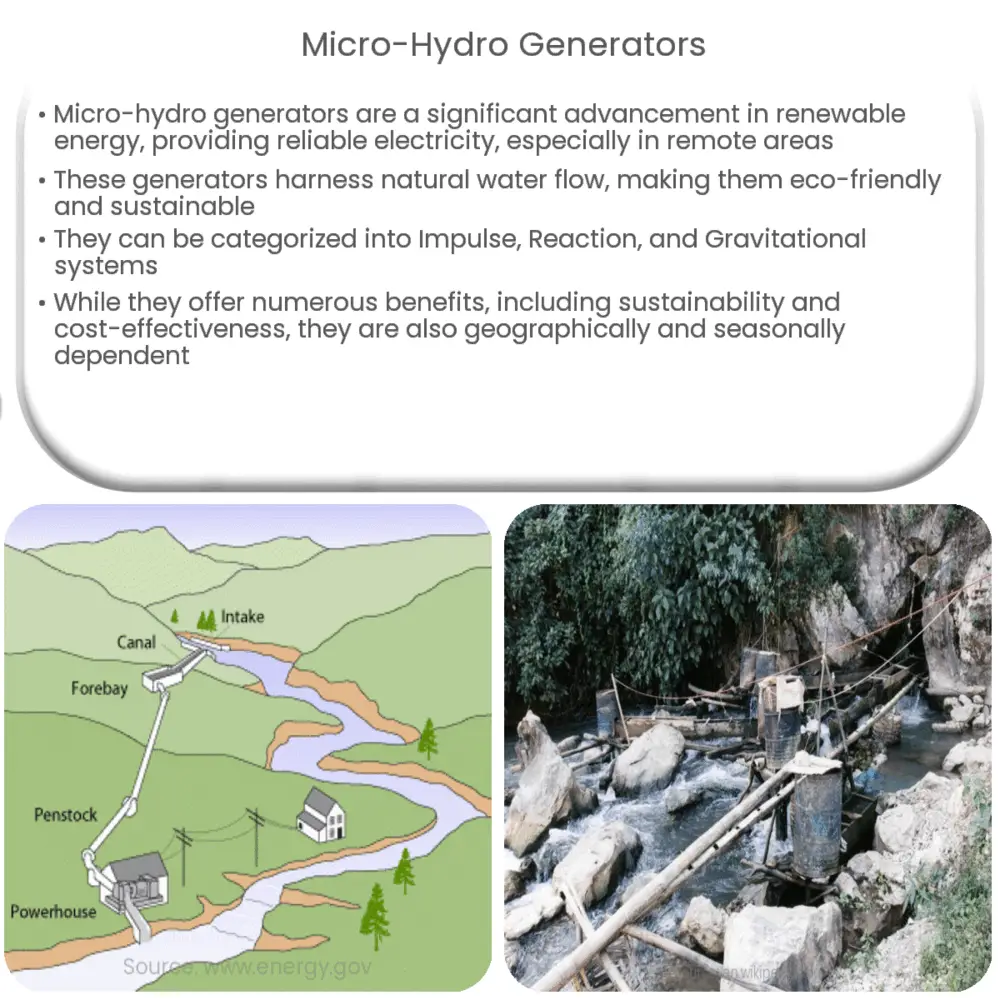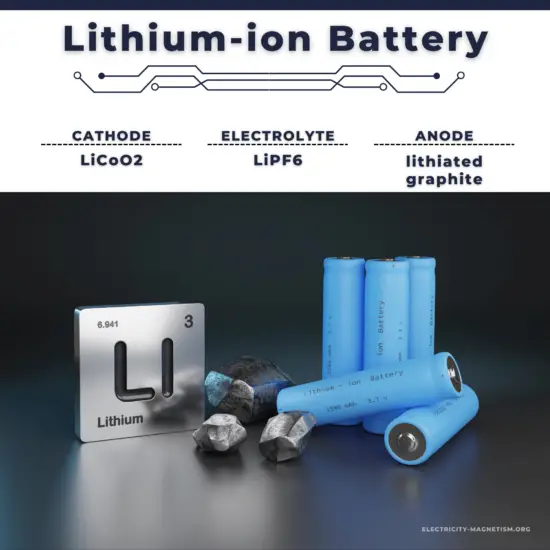Explore the concept, components, types, advantages, and limitations of Micro-Hydro Generators, a sustainable energy solution for the future.

Understanding Micro-Hydro Generators
Micro-hydro generators represent a remarkable advancement in renewable energy technology. Their application in providing reliable and clean electricity, particularly in remote areas, has profoundly transformed lives and economies.
The Concept of Micro-Hydro Generators
A Micro-Hydro Generator is a type of hydroelectric power system designed to generate power on a small scale. Unlike large-scale hydroelectric dams, these systems do not require a vast water reservoir. They function through the utilization of natural water flow, such as a river or stream, making them an environmentally friendly and sustainable energy source.
Components of a Micro-Hydro Generator
- Turbine: This is where the kinetic energy of the flowing water is converted into mechanical energy. There are various types of turbines used, with the choice largely depending on the head (height of water drop) and flow rate.
- Generator: The mechanical energy from the turbine is transformed into electrical energy here.
- Pipeline (Penstock): This conveys water from the source to the turbine.
- Control System: This regulates the operation of the system, ensuring optimal performance and safety.
Types of Micro-Hydro Generators
Micro-Hydro Generators can be categorized based on the method they employ to generate power. These categories are:
- Impulse Systems: These systems use the velocity of water striking the turbine blades to generate power. The two most common types are Pelton and Turgo turbines.
- Reaction Systems: Unlike Impulse Systems, these generators use both the velocity and pressure of water. They include Francis and Propeller turbines.
- Gravitational Systems: These rely on the weight or gravitational force of water. An example of this system is the Archimedes Screw.
While the scalability and eco-friendliness of Micro-Hydro Generators make them an excellent choice for renewable energy production, there are specific prerequisites for their successful implementation, like a consistent water source and a certain amount of head. Thus, their applicability may be geographically limited.
Advantages of Micro-Hydro Generators
Micro-Hydro Generators offer several advantages over conventional energy sources. These benefits include:
- Sustainability: They generate electricity by harnessing the energy of flowing water, making them a renewable energy source.
- Low Impact on Environment: As they don’t require large reservoirs or dams, they have minimal impact on the surrounding ecosystem.
- Consistency: Unlike solar or wind power, micro-hydro systems can generate electricity continuously as long as there is a steady water flow.
- Cost-Effective: Once installed, the running and maintenance costs of these systems are relatively low.
Limitations and Challenges
While Micro-Hydro Generators are efficient and eco-friendly, they also come with a few limitations:
- Dependence on Geography: The success of a micro-hydro system is largely dependent on the geographical location, as a steady and sufficient water flow is required.
- Seasonal Variation: The efficiency of these generators may vary with the seasons, as water flow can decrease during the dry months.
- Initial Setup Costs: Although running costs are low, the initial installation cost can be high, especially in remote areas.
Conclusion
In conclusion, Micro-Hydro Generators represent an important step forward in the utilization of renewable energy sources. Their ability to generate electricity in a cost-effective and environmentally friendly manner is commendable. While they do have certain limitations, the potential benefits they offer, especially to off-grid and remote communities, are significant. With further research and advancements in technology, we can expect these systems to play a pivotal role in our shift towards sustainable energy solutions.



